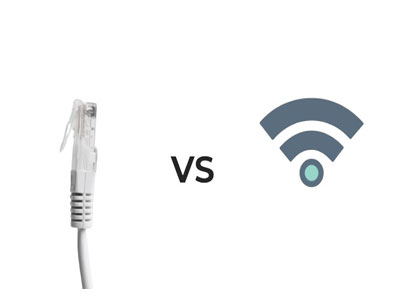Key Takeaway
Yes, Ethernet is faster than WiFi in most cases. Ethernet provides a direct, wired connection, offering speeds up to 1 Gbps or more, depending on the cable and network setup. It ensures consistent performance with minimal interference, making it ideal for tasks that require high speed and reliability, such as gaming, streaming, or large file transfers.
WiFi, while convenient, is generally slower because it uses a wireless signal that can be affected by distance, obstacles, and interference. Typical WiFi speeds range from 100 Mbps to 1 Gbps, depending on the router and network conditions. For stable, high-speed connections, Ethernet is the better choice. However, WiFi is preferred for mobility and ease of use.
Comparing Data Transfer Rates Between Ethernet andWiFi
Ethernet typically outpaces WiFi in terms of raw data transfer speeds. Standard Ethernet supports speeds of 10 Mbps, 100 Mbps, 1 Gbps, and even up to 10 Gbps with advanced setups. In contrast, modern WiFi standards like WiFi 5 (802.11ac) offer speeds up to 3.5 Gbps, while WiFi 6 (802.11ax) can reach 9.6 Gbps under ideal conditions.
However, WiFi speeds are often affected by environmental factors like interference and the number of connected devices. Ethernet’s direct wired connection ensures consistent speeds regardless of external influences. This makes Ethernet a better choice for high-speed data transfer and latency-sensitive applications, such as robotic control or real-time monitoring.
In industrial settings, where precision and stability are essential, Ethernet remains the preferred choice for speed and performance.

Factors That Affect Ethernet andWiFi Performance
While Ethernet’s wired nature ensures stable speeds, WiFi performance depends on several variables:
Interference: WiFi signals can be disrupted by physical obstructions, electromagnetic interference, and competing networks, especially in industrial environments.
Distance from Router: WiFi speed decreases as the distance from the router increases, whereas Ethernet maintains consistent performance over cable lengths up to 100 meters.
Network Congestion: WiFi networks shared by multiple devices often experience congestion, reducing performance for critical applications. Ethernet eliminates this issue by providing dedicated connections.
Cable Quality: For Ethernet, the quality and category of cables (e.g., Cat5e, Cat6) impact maximum achievable speeds.
Understanding these factors is crucial for optimizing performance in both wired and wireless networks.
Reliability of Ethernet in Industrial Settings vs.WiFi
Reliability of Ethernet in Industrial Settings vs.WiFi
ApplicationsWhere Ethernet OutperformsWiFi
Certain applications highlight Ethernet’s superiority over WiFi:
Real-Time Control: Ethernet’s low latency and deterministic performance make it indispensable for robotics, conveyor systems, and CNC machines.
Data-Intensive Tasks: Applications like high-resolution video monitoring benefit from Ethernet’s high-speed, stable connections.
Harsh Environments: In settings with heavy machinery and electromagnetic interference, Ethernet’s shielded cables ensure reliable communication.
Large Networks: Ethernet’s ability to handle multiple devices without congestion makes it ideal for complex industrial setups.
While WiFi excels in mobile and flexible applications, Ethernet remains the backbone of most industrial networks.
Future Prospects for Ethernet andWiFi in Industrial Automation
Both Ethernet and WiFi are evolving to meet the demands of modern industrial automation.
Ethernet is advancing with technologies like Time-Sensitive Networking (TSN), enabling precise synchronization for real-time applications. Speeds of 10 Gbps and beyond are becoming more accessible, making Ethernet future-proof for data-heavy environments.
WiFi, with the introduction of WiFi 6 and 6E, is closing the gap in speed and reliability. Enhanced features like OFDMA (Orthogonal Frequency-Division Multiple Access) and reduced latency make WiFi a viable option for certain industrial applications.
In the future, hybrid networks combining the strengths of Ethernet and WiFi are likely to dominate, offering both stability and mobility.
Conclusion
While WiFi offers flexibility and convenience, Ethernet remains the gold standard for speed and reliability in industrial applications. Ethernet’s consistent performance, low latency, and ability to handle high data loads make it indispensable for critical operations.
WiFi’s advancements make it a strong contender for non-critical and mobile applications, but Ethernet’s wired stability ensures it continues to be the backbone of industrial automation networks. By understanding their strengths, industries can design robust systems tailored to their specific needs.
